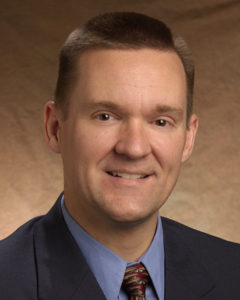KNOXVILLE—The possible detrimental effects on balance following a surgical procedure performed on many children with cerebral palsy is being better understood thanks to research conducted in part by a University of Tennessee, Knoxville, doctoral student.
The team looked at a procedure in which the rectus femoris muscle is disconnected from the front of the knee and reattached to the back of the leg to correct problematic muscle function and improve mobility. Though commonly done to allow for more flexibility in the knees of patients, the surgery has inconsistent outcomes.
Misagh Mansouri, a PhD candidate in the College of Engineering’s Department of Mechanical, Aerospace and Biomedical Engineering, and his adviser, Jeffrey Reinbolt, an assistant professor in the department, looked at how the procedure affects the balance of those with cerebral palsy.
“A lot of study has been given to how the surgery affects the range of motion, but we wanted to know if and how that translates into actual dynamics of balance in children with cerebral palsy,” said Mansouri. “Using the real-world data from our collaborators at the Gillette Children’s Hospital, we created patient-specific models of children with cerebral palsy for both pre- and post-surgery and with different crouch postures.”
Mansouri began by interfacing two powerful software programs: MATLAB to simulate brain activity and OpenSim to simulate the body. The newly combined software—which has been made open-source to allow its adoption by other researchers—gives teams a chance to tweak various aspects of the simulation.
“Simulations can complement experiments to become a great asset to health care professionals, said Reinbolt. “We are working on using patient-specific simulations to improve not only treatment of movement disorders, but interactions between people and the environment as well.”
Ninety-two different muscle actuators—basically synthetic lightweight muscles capable of acting like the real thing—spread across 21 lower-body joints provide for an almost limitless number of conditions and movements, opening up all aspects of the physiology of cerebral palsy sufferers for study.
Mansouri pointed out that movement disorders account for $849 billion each year in medical expenses, lost wages and lost productivity.
That cost impact, combined with the obvious physical and emotional tolls of such conditions, further spurred Mansouri and Reinbolt to take a “body-first” approach to their study.
“Unlike many other studies in the field of biomechanics, we are not trying to simply track some experimental movements,” said Mansouri. “We created biologically inspired controllers based on the central nervous system to run muscle-actuated simulation with the goal of predicting and improving functional outcomes.”
However, once Mansouri and Reinbolt—whose team included researchers from Stanford University, the University of Western Australia and UT—looked at the data, it became apparent that the hoped-for miracle that the surgery might provide was anything but.
“Our simulations showed that children who had the surgery were more likely to lose balance and fall during tripping than ones who did not, regardless of degree of crouched posture and whether they had the surgery on one side or both sides of their knees,” said Mansouri. “There are certainly more studies to be done and factors to be tested, but these results indicate that rectus femoris plays an intrinsic role in postural response to any challenges relating to balance.”
Mansouri said more work is needed before the their research, funded through grants from the National Institutes of Health and the National Science Foundation, can be applied clinically.
For their next step, they want to test balance in different directions, such as side-to-side and diagonal motion, to go along with the forward-and-back motion studies they’ve done.
For more on the College of Engineering, visit http://engr.utk.edu.
For more on the Department of Mechanical, Aerospace and Biomedical Engineering, visit http://mabe.utk.edu.
—
C O N T A C T :
David Goddard (865-974-0683, david.goddard@utk.edu)
